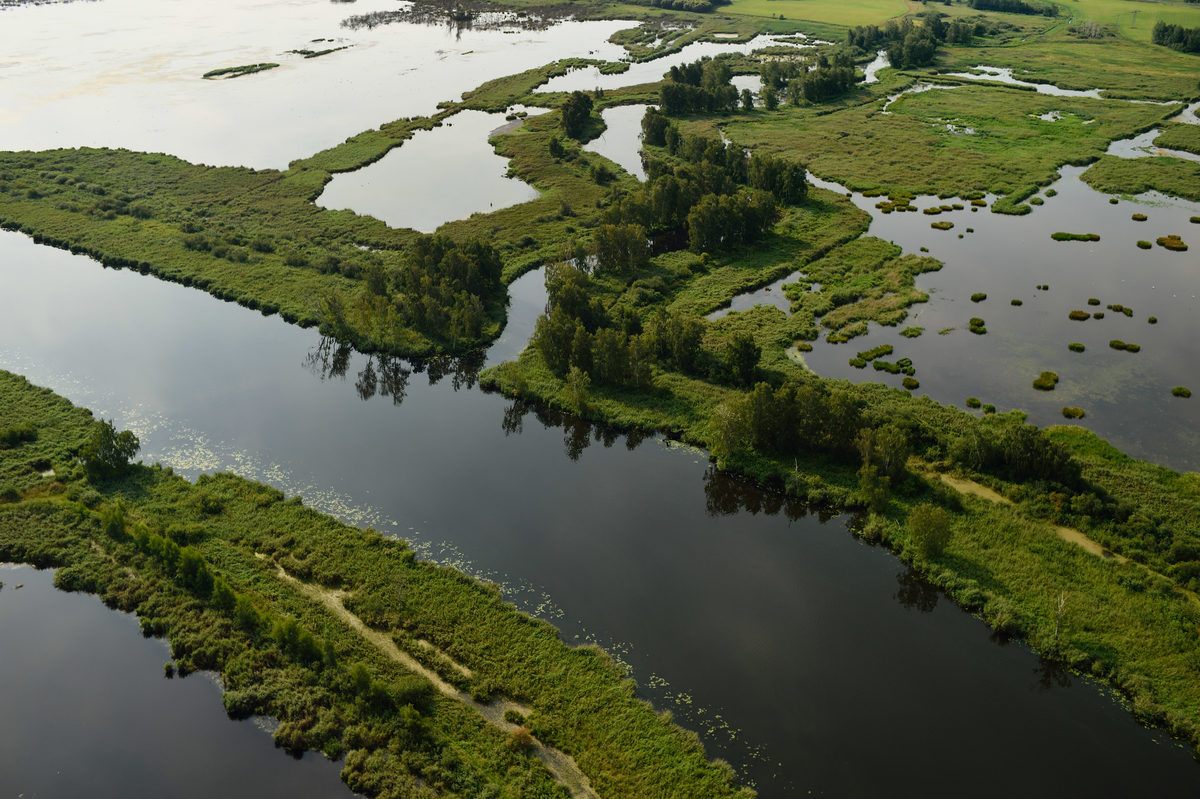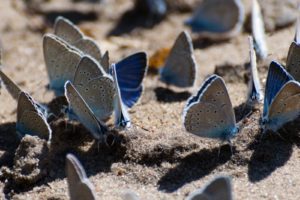A keen advocate of rewilding, Tim Kasoar is a fourth year PhD student at Cambridge University in the UK. A particular interest in restoring wetland and floodplain habitats and natural flood dynamics took him to the Oder Delta rewilding area, where he witnessed firsthand the beneficial impact of river restoration on local biodiversity.

As a conservation scientist, you spend a lot of time hearing about problems – the declines and eventual extinctions of species, the destruction of habitats, the growing human demand for resources and space. It’s all rather depressing. But a few years ago I was introduced to the concept of “rewilding” and was instantly sold. It was not only refreshing to hear some good news for a change, but this new conservation approach seemed to me a great opportunity to make things better, rather than simply attempting to stem the tide of destruction.
As a result, I decided to study rewilding for my PhD thesis, focusing on one specific aspect – the restoration of natural disturbance processes.

Natural disturbance processes (also just known as natural processes) are naturally occurring ecological processes that significantly disrupt the ecosystem, giving it a fresh start. These include fire, flooding, disease, herbivory and even geological activity. One of the problems with many nature reserves is that they are too small or too carefully managed for these processes to occur, or if they do occur, they disturb the entire area at the same time. In large expanses of land where nature is left unmanaged, these processes occur sporadically in time and space, creating a dynamic mosaic of different habitats, some that have been disturbed recently, others further back in the past.
This relates to another problem with the current state of European nature. There are a number of species which we think of as “farmland species” – that is to say species which are common on farmland (especially traditionally managed farmland), but rare or absent from unmanaged habitats. These include everything from corncrakes to large blue butterflies.
Many of these species are now amongst the most threatened in Europe, as their farmland habitat is either too intensively farmed, or is being abandoned. One hypothesis is that before agriculture existed in Europe, these species, which seem to prefer open or mixed habitats, would have lived on land that had been naturally disturbed.
Today humans have largely stopped the process of natural disturbance, but farmland acts as a substitute, with ploughs and chainsaws replacing floods and fires in managing the landscape. The question is, can restoring natural disturbance save these species from the loss of farmland habitat?
All this brings me to the Oder Delta region, where an ambitious rewilding project is taking place. Like most major rivers in Europe, the hydrodynamics of the Peene have been artificially altered, with dykes built along the main channel and floodplains drained to create agricultural polders. This modification is now being reversed, with dykes taken down, pumping stations switched off, and land and river connected once again.

For the past couple of months I have been studying the birds and butterflies which have returned to these rewetted polders, as well as at control sites in the surrounding landscape. While the fieldwork is demanding, rising with the birds and wading through mud and vegetation to access the hearts of restored areas, the rewards have been amazing.
Cranes are a rare breeding bird in the UK, my home, but abundant in the delta, their calls echoing for miles on a still morning. White-tailed eagles – huge and fierce – are an almost daily sighting. Penduline tits build elaborate hanging nests, a remarkable feat of construction for such an unassuming little bird.
As for butterflies, green-veined whites, pearl-bordered fritillaries and even the occasional swallowtail have all been spotted, along with several others. I get the impression that birds have benefitted to a far greater extent than butterflies from this restoration, although it’s no surprise that different groups respond differently. Conservation is never a one-solution-fits-all activity.
In addition to the species that I’m studying, I’ve seen abundant levels of other wildlife. Wild boar rooting in the undergrowth, beavers gnawing at trees, male red deer with their impressive antlers. One thing that sticks with me is just how much biodiversity benefits by letting nature reclaim just a small amount of land. None of the rewetted polders are huge – a couple of kilometres across at most – and the surrounding landscape is prosperous and intensively farmed. Even so, given the smallest opportunity, nature has quickly returned.
With the bird breeding season already drawing to a close, I have a couple more weeks left before heading home. I’m looking forward to seeing my friends and family again, but know that it will be hard to readjust to working at a desk all day, and having the tranquil sounds of the dawn chorus replaced by rush hour traffic. Still, fieldwork can’t last forever – I have a thesis to write! To give a more vivid insight into my field experience I have shared some of my photos in the gallery below.
Learn more about Rewilding Europe’s work in the Oder Delta here.
